
This post may contain links from our sponsors and affiliates, and Flywheel Publishing may receive
compensation for actions taken through them.
When it comes to raising a family, where you live matters. Factors such as crime, public amenities, job availability, income, and school systems — to name a few — can make a big difference.
Taking these factors into account, some American cities are far better for families than others. The best cities for families span the United States — from California to the Northeast and from the Midwest to the Mid-Atlantic.
24/7 Wall St. created an index with a range of social, educational, economic, and health care measures to determine the best cities for families. Metropolitan areas with violent and property crime rates that exceeded national rates were automatically excluded.
Cities that are best for families have to meet the needs of both children and parents. Measures of income, employment, affordability, and commute time are important considerations for adults in any family.
And for children, graduation and preschool enrollment rates can be indicative of the quality of a given area’s school system. In addition, child poverty and child health insurance rates reflect children’s welfare in an area.
While some factors largely depend on the individual family, other measures are the responsibility of the city. For many families, access to public parks and recreation areas such as tennis courts and swimming pools is important. However, access to such amenities depends entirely on the city.
Click here to see the best cities for families.
Click here to see our methodology.

30. Washington-Arlington-Alexandria, DC-VA-MD-WV
> 5-yr. change in number of families: +6.9%
> Violent crimes per 100,000 people: 324.1
> Share of 3-4 yr. olds in preschool: 53.5%
> Graduation rate: 85.8%
Washington-Arlington-Alexandria is one of 30 U.S. metro areas with relatively low crime and especially favorable social and economic conditions for families. Families in the area have better access than those in most communities to recreation centers and sports facilities. The D.C. area also boasts more public parks than all but a dozen other metro areas nationwide.
[in-text-ad]

29. San Jose-Sunnyvale-Santa Clara, CA
> 5-yr. change in number of families: +7.4%
> Violent crimes per 100,000 people: 251.5
> Share of 3-4 yr. olds in preschool: 56.5%
> Graduation rate: 83.8%
Education in early childhood can be important for development into adulthood. With multiple state-subsidized preschools in the San Jose metro area, over half of all area 3 and 4-year olds are enrolled in preschool programs, one of the higher shares among American metropolitan areas.

28. Pittsburgh, PA
> 5-yr. change in number of families: +0.8%
> Violent crimes per 100,000 people: 266.3
> Share of 3-4 yr. olds in preschool: 49.9%
> Graduation rate: 87.2%
Pittsburgh is one of the most affordable metro areas in the country for families. The typical area home is worth just double the median family income. In comparison, the typical American home has a value nearly three times the U.S. median household income.

27. Providence-Warwick, RI-MA
> 5-yr. change in number of families: +0.7%
> Violent crimes per 100,000 people: 333.7
> Share of 3-4 yr. olds in preschool: 50.7%
> Graduation rate: 84.4%
There are nearly 60 recreation centers for every 100,000 families and five public parks in the Providence metro area, more than in most other U.S. metro areas. Children in the metro area are also less likely to live in poverty or be without health insurance than those living in most other cities.
[in-text-ad-2]
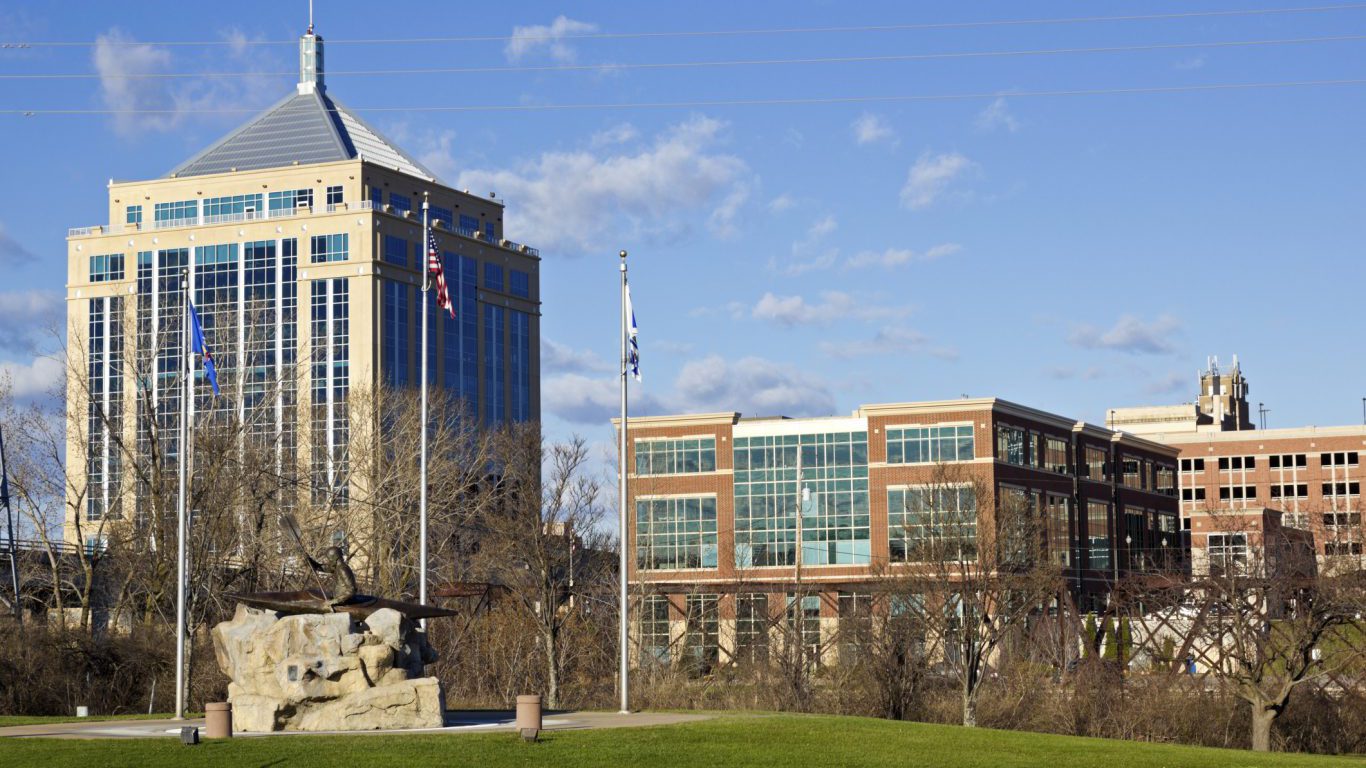
26. Wausau, WI
> 5-yr. change in number of families: +4.3%
> Violent crimes per 100,000 people: 110.9
> Share of 3-4 yr. olds in preschool: 38.5%
> Graduation rate: 92.3%
Wausau, Wisconsin is one of the safest metro areas in the country. There were only 111 violent crimes for every 100,000 residents in 2015, less than a third of the U.S. violent crime rate. Neighborhood safety is an important factor for any family to consider, and in the last five years, the number of families in the Wausau metro area increased by 4.3%, more than double the comparable national growth rate.
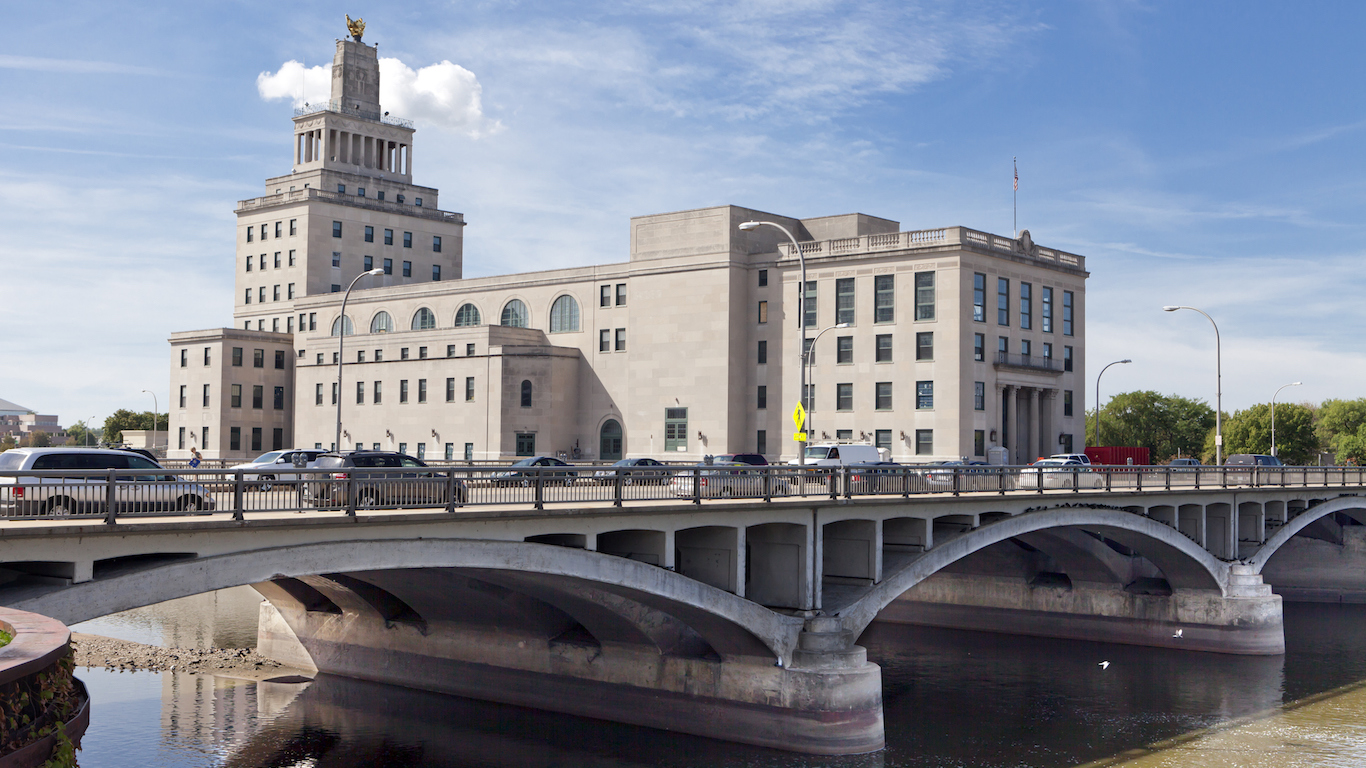
25. Cedar Rapids, IA
> 5-yr. change in number of families: -2.5%
> Violent crimes per 100,000 people: 189.5
> Share of 3-4 yr. olds in preschool: 54.3%
> Graduation rate: 89.0%
For working families, time can be a precious commodity. In the Cedar Rapids metro area, the average commute time is only about 19 minutes — 7 minutes shorter than the commute for the average American. The Cedar Rapids metro area also offers subsidized preschool, and partially as a result, 54.3% of 3 and 4-year olds are enrolled — one of the larger shares among U.S. metro areas.
[in-text-ad]
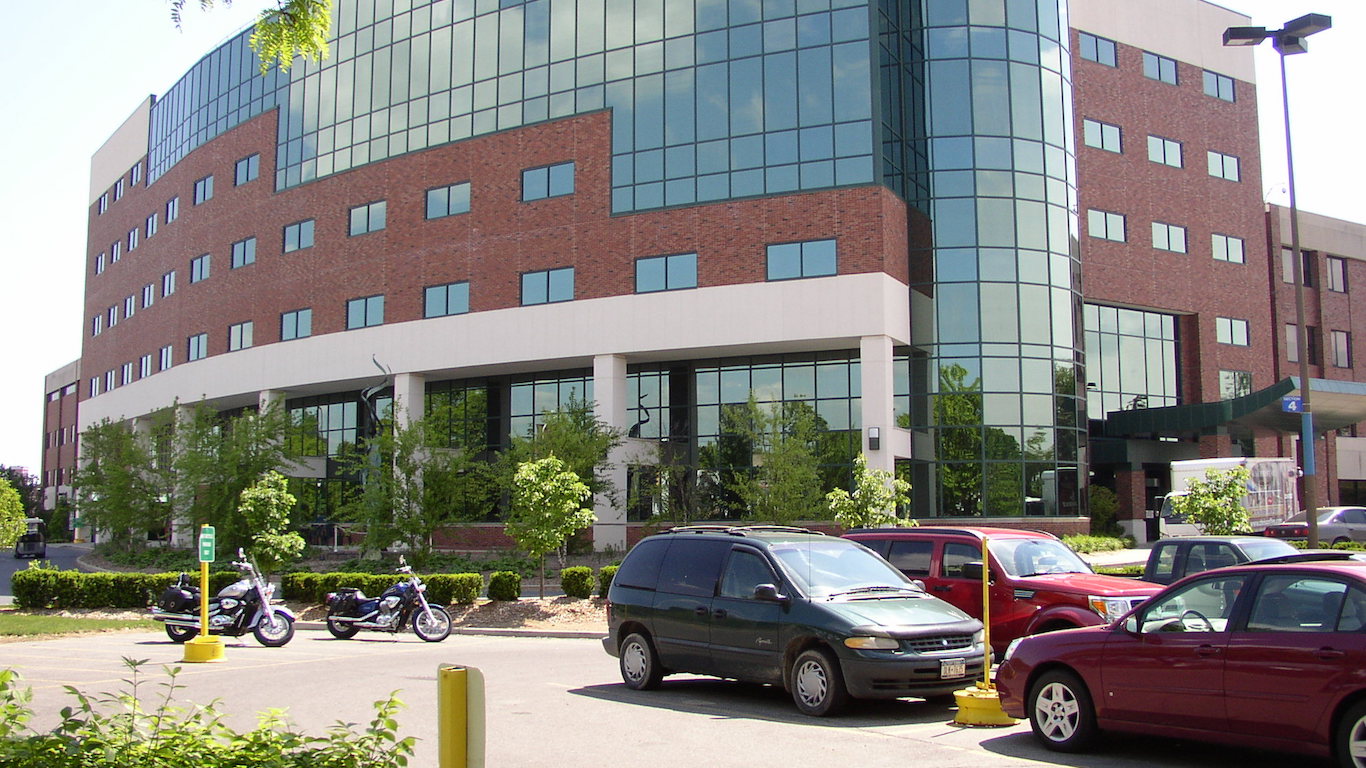
24. Glens Falls, NY
> 5-yr. change in number of families: -13.2%
> Violent crimes per 100,000 people: 170.5
> Share of 3-4 yr. olds in preschool: 57.6%
> Graduation rate: 82.5%
Glens Falls is one of two metro areas in upstate New York to rank among the best cities to raise a family. At 57.6%, Glens Falls has one of the highest preschool enrollment rates of any U.S. metro area. The area is also relatively safe. There were only 171 violent crimes in 2015 for every 100,000 residents, less than half the U.S. violent crime rate.

23. Midland, MI
> 5-yr. change in number of families: N/A
> Violent crimes per 100,000 people: 143.9
> Share of 3-4 yr. olds in preschool: 51.0%
> Graduation rate: 86.8%
Many of the best places to raise a family can be prohibitively expensive for many Americans, but not Midland, Michigan. The typical area home is worth $138,500, only twice as much as the area’s median family income. Nationwide, the median home value is nearly three times the median income.
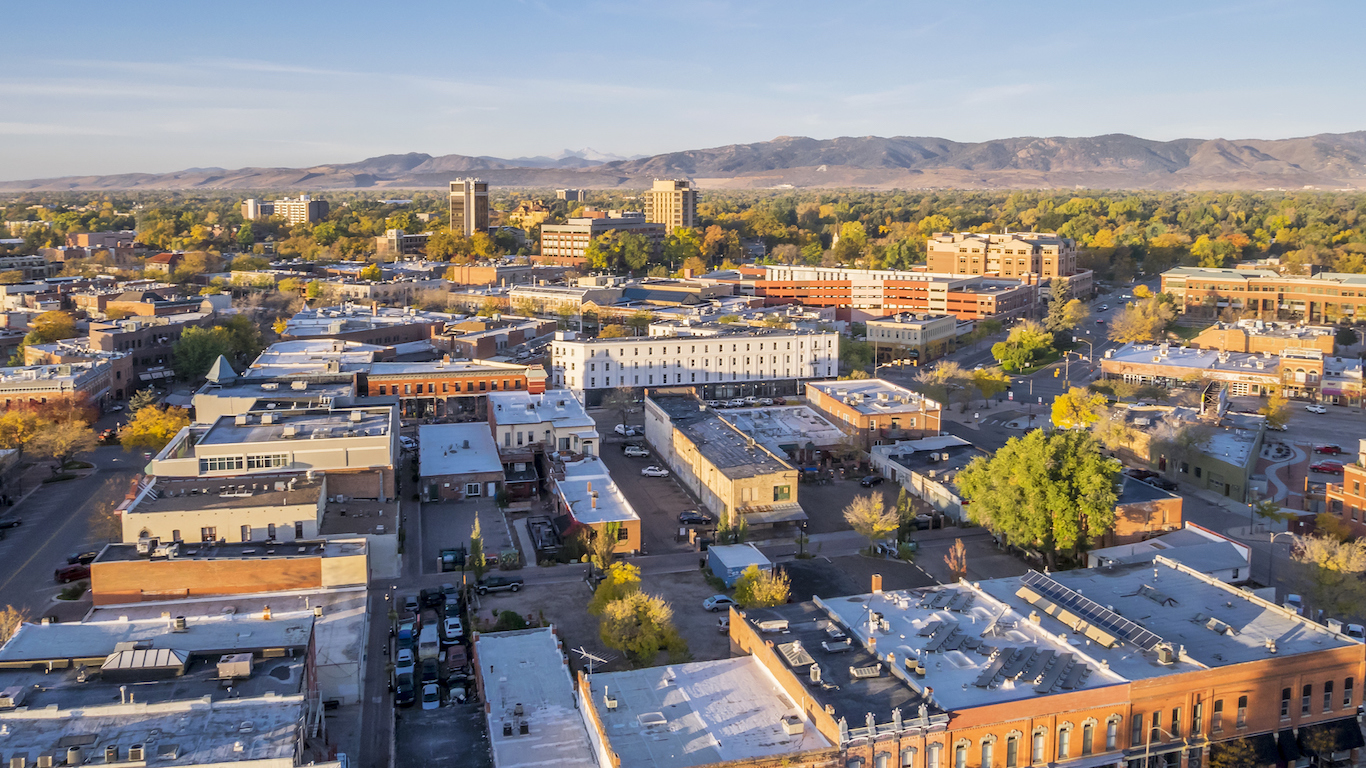
22. Fort Collins, CO
> 5-yr. change in number of families: +4.7%
> Violent crimes per 100,000 people: 199.1
> Share of 3-4 yr. olds in preschool: 49.7%
> Graduation rate: 79.0%
The 79.0% high school attainment rate among Fort Collins adults leaves something to be desired, and a population with low educational attainment can often a share can often point to a suboptimal job market strong economic conditions in the metro area make it an ideal place for families. The unemployment rate among parents is only 2.6%, well below the comparable 3.8% U.S. rate. Additionally, the typical Fort Collins family earns $80,757 a year, well above the $68,260 median family income nationwide.
[in-text-ad-2]

21. Des Moines-West Des Moines, IA
> 5-yr. change in number of families: +6.3%
> Violent crimes per 100,000 people: 367.5
> Share of 3-4 yr. olds in preschool: 44.3%
> Graduation rate: 90.8%
Des Moines, Iowa boasts one of the higher graduation rates of any metro area. More than 90% of students in Des Moines graduate from high school, well above the 83% U.S. high school graduation rate. The Des Moines area also has nearly 60 recreation centers and sports facilities, such as tennis courts and swimming pools, for every 100,000 families, one of the higher shares of any U.S. metro area.

20. Minneapolis-St. Paul-Bloomington, MN-WI
> 5-yr. change in number of families: +7.4%
> Violent crimes per 100,000 people: 285.2
> Share of 3-4 yr. olds in preschool: 46.0%
> Graduation rate: 82.5%
The Twin Cities metro area is now home to over 875,000 families — up 7.4% in the last half decade. Favorable economic conditions make the metro area especially appealing to families. Housing is more affordable in Minneapolis-St. Paul-Bloomington than it is nationwide, and only 2.8% of working parents are unemployed, well below the comparable 3.8% share nationwide.
[in-text-ad]
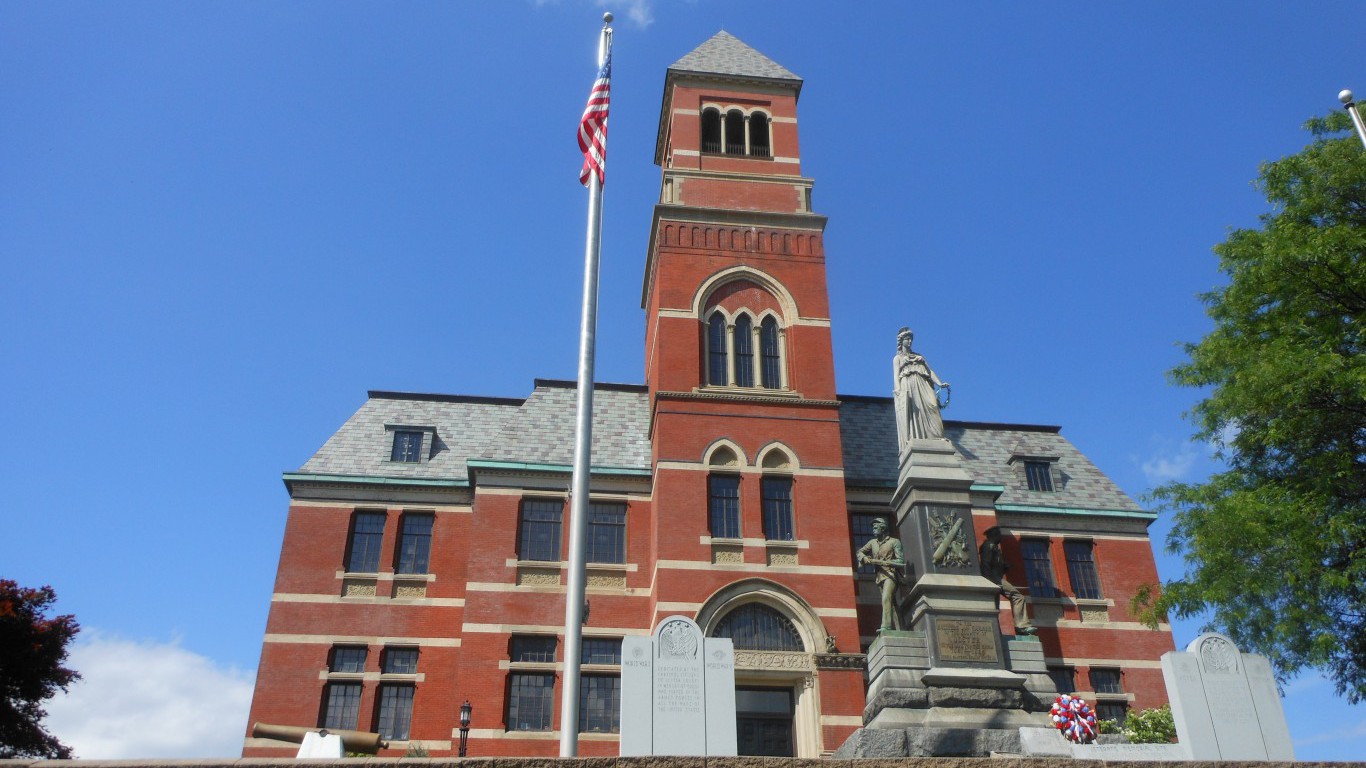
19. Kingston, NY
> 5-yr. change in number of families: -1.4%
> Violent crimes per 100,000 people: 169.3
> Share of 3-4 yr. olds in preschool: 51.6%
> Graduation rate: 82.6%
The Kingston school district provides universal preschool for 4-year olds — and partially as a result, the Kingston metro area is one of a minority cities nationwide where more than half of area 3 and 4-year olds are enrolled in a preschool program. Children in the area are also far more likely than most to receive needed medical treatment. Only 0.2% of children in Kingston lack health insurance. Nationwide, 4.8% of children are without health insurance.

18. Bismarck, ND
> 5-yr. change in number of families: +18.0%
> Violent crimes per 100,000 people: 227.1
> Share of 3-4 yr. olds in preschool: 43.5%
> Graduation rate: 84.7%
Due in part to an economic boom fueled by resource extraction in North Dakota’s Bakken shale region, the number of families living in Bismarck shot up 18% over the last half decade, one of the fastest such increases of any metro area. Though falling oil prices are taking a toll, Bismarck’s economy is relatively strong, with only a 2.4% unemployment rate among working parents as of 2015 — well below the 3.8% nationwide rate. Jobs are not only plentiful, but also tend to pay well. The typical metro area family earns $90,672 a year, more than in all but 12 other metro areas.
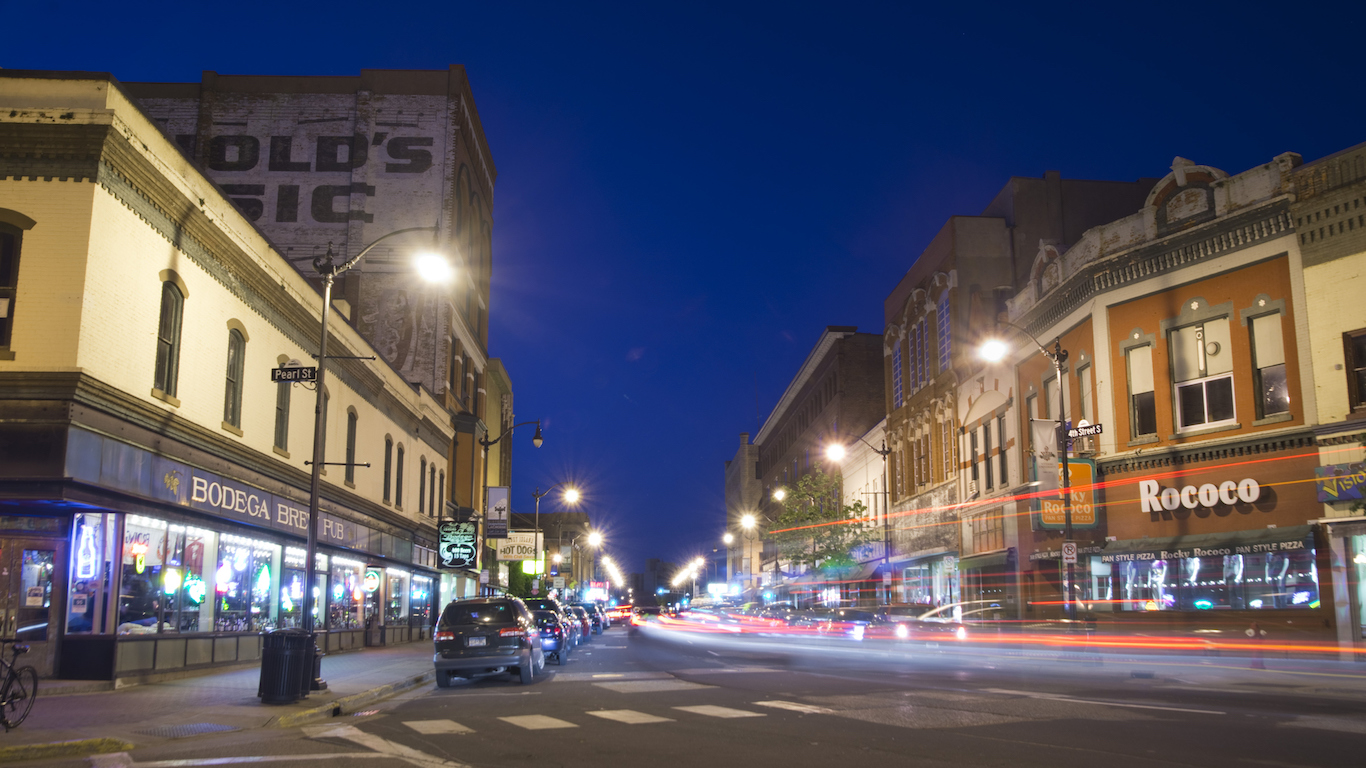
17. La Crosse-Onalaska, WI-MN
> 5-yr. change in number of families: -1.4%
> Violent crimes per 100,000 people: 116.5
> Share of 3-4 yr. olds in preschool: 55.4%
> Graduation rate: 84.2%
Time is a precious commodity for working parents — and those in the La Crosse-Onalaska metro area likely have more of it than most. The average commute time in the metro area is less than 19 minutes — compared to a more than 26-minute average commute nationwide. Additionally, 55.4% of 3 and 4-year olds in La Crosse-Onalaska are enrolled preschool, one of the higher shares among U.S. metro areas.
[in-text-ad-2]
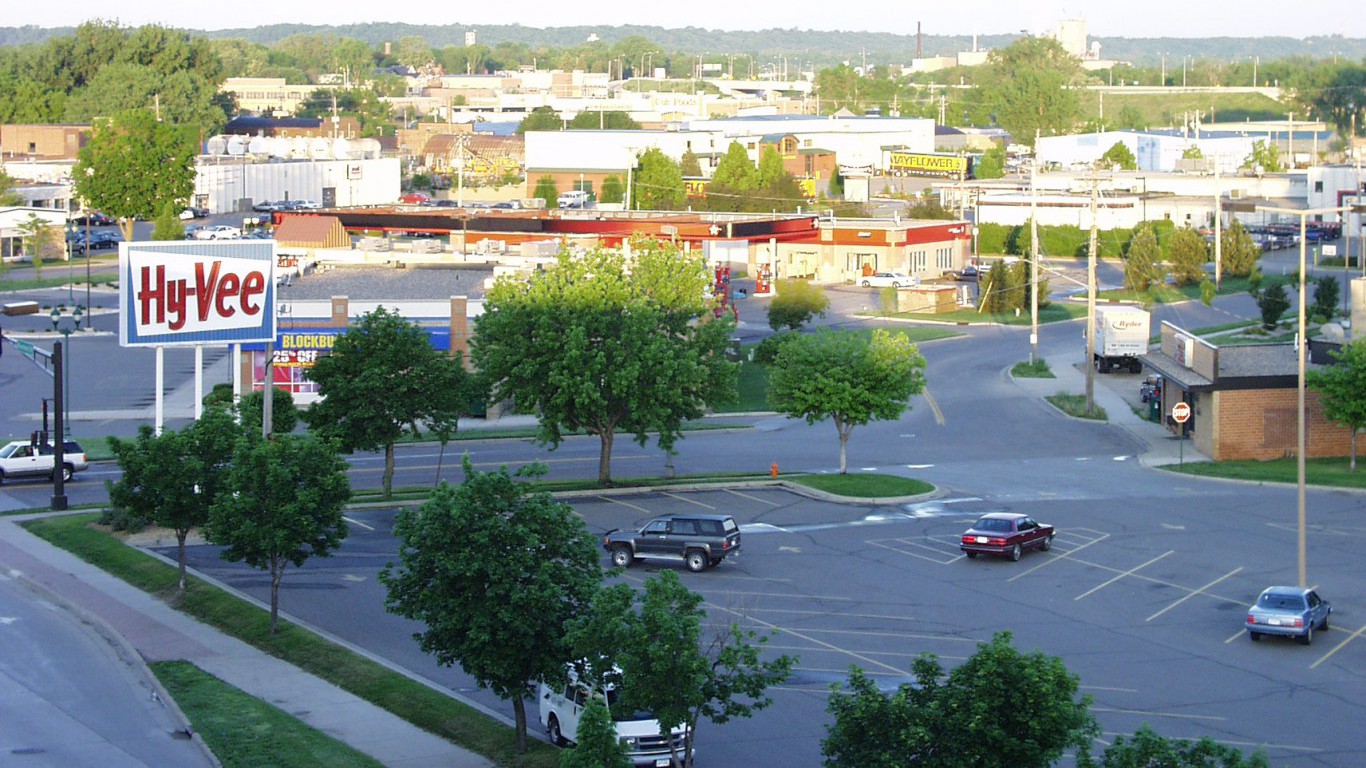
16. Mankato-North Mankato, MN
> 5-yr. change in number of families: +2.1%
> Violent crimes per 100,000 people: 152.8
> Share of 3-4 yr. olds in preschool: 51.6%
> Graduation rate: 84.5%
Minnesota offers free preschool for 4-year olds, which considerably reduces the estimated $922 monthly cost of raising a child of this age in the state. Not only does the universal preschool program save parents money, but early childhood education can help brain development. The Mankato-North Mankato metro area is one of a minority nationwide where more than half of all 3 and 4-year olds are enrolled in preschool.
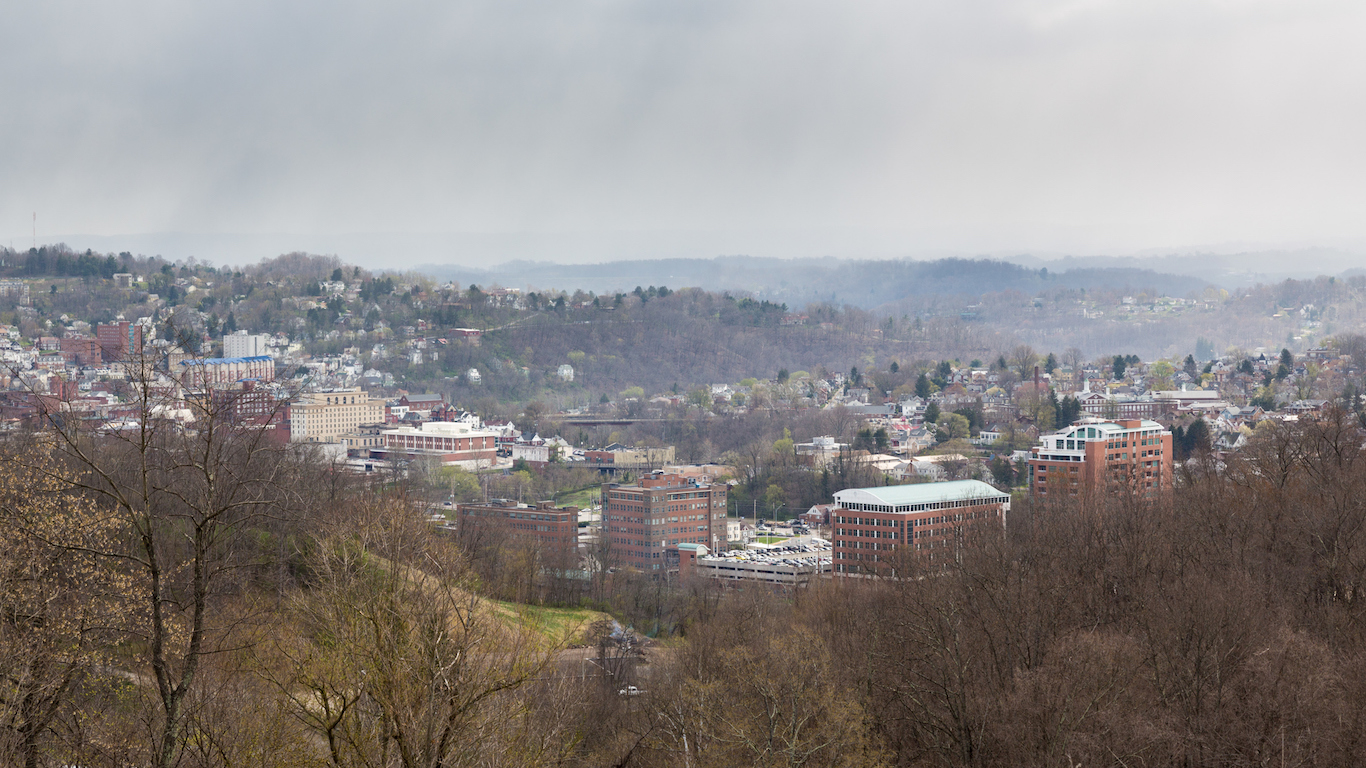
15. Morgantown, WV
> 5-yr. change in number of families: +2.9%
> Violent crimes per 100,000 people: 267.6
> Share of 3-4 yr. olds in preschool: 42.6%
> Graduation rate: 84.7%
If you’re a family that likes to keep it local, look no farther than Morgantown. The city offers universal pre-school and is home to West Virginia University, so your child can grow up having an education right next door. Morgantown ranks highly among other U.S metro areas when it comes to recreation areas, as the community boasts 65 for every 100,000 families, more than all but 15 other metro areas.
[in-text-ad]
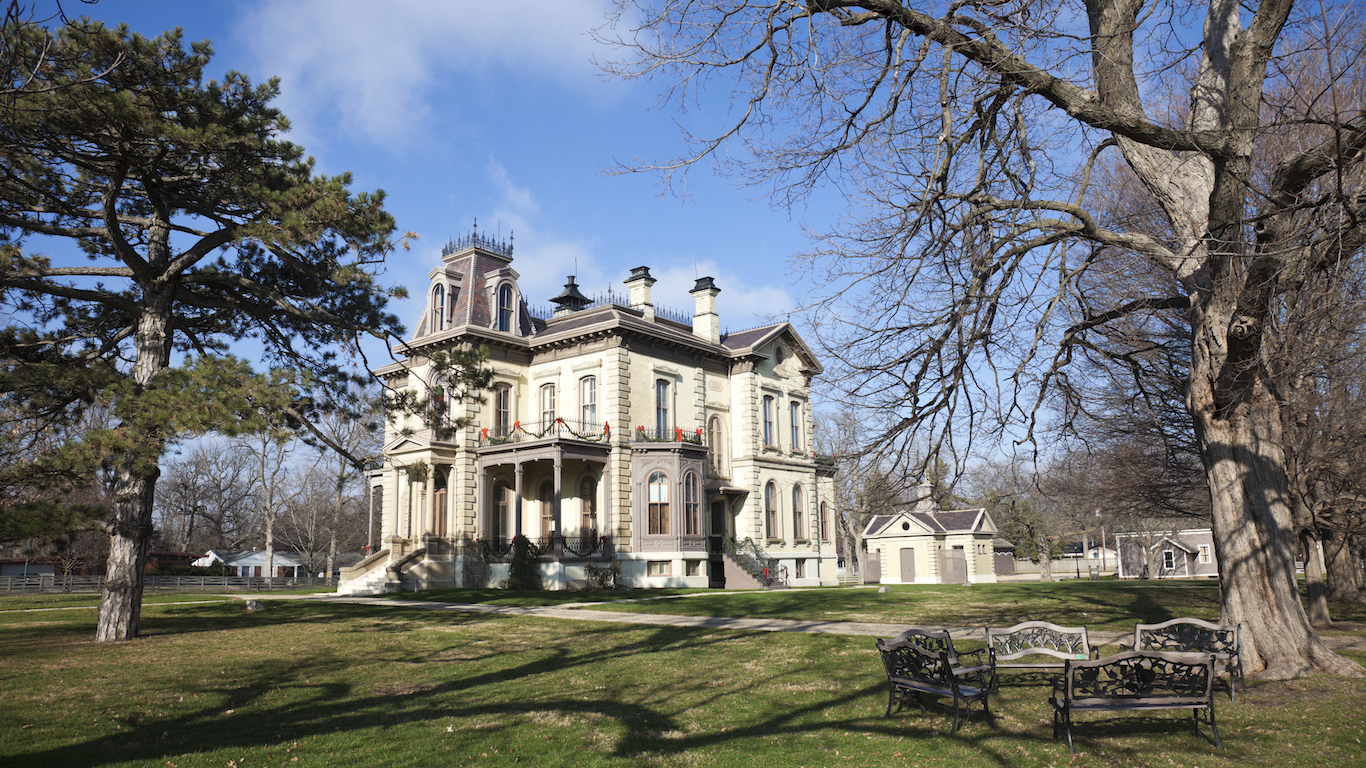
14. Bloomington, IL
> 5-yr. change in number of families: N/A
> Violent crimes per 100,000 people: 252.0
> Share of 3-4 yr. olds in preschool: 58.1%
> Graduation rate: 88.2%
For working parents, long commutes can be stressful and cut into time better spent with the family. In the Bloomington metro area, the average commute is less than 18 minutes, which is nearly 10 minutes less than the average commute on a national scale.
Children in the Bloomington metro area are also far less likely to grow up facing serious financial hardship than most. Bloomington’s child poverty rate of 7.3% is less than half the nationwide rate.
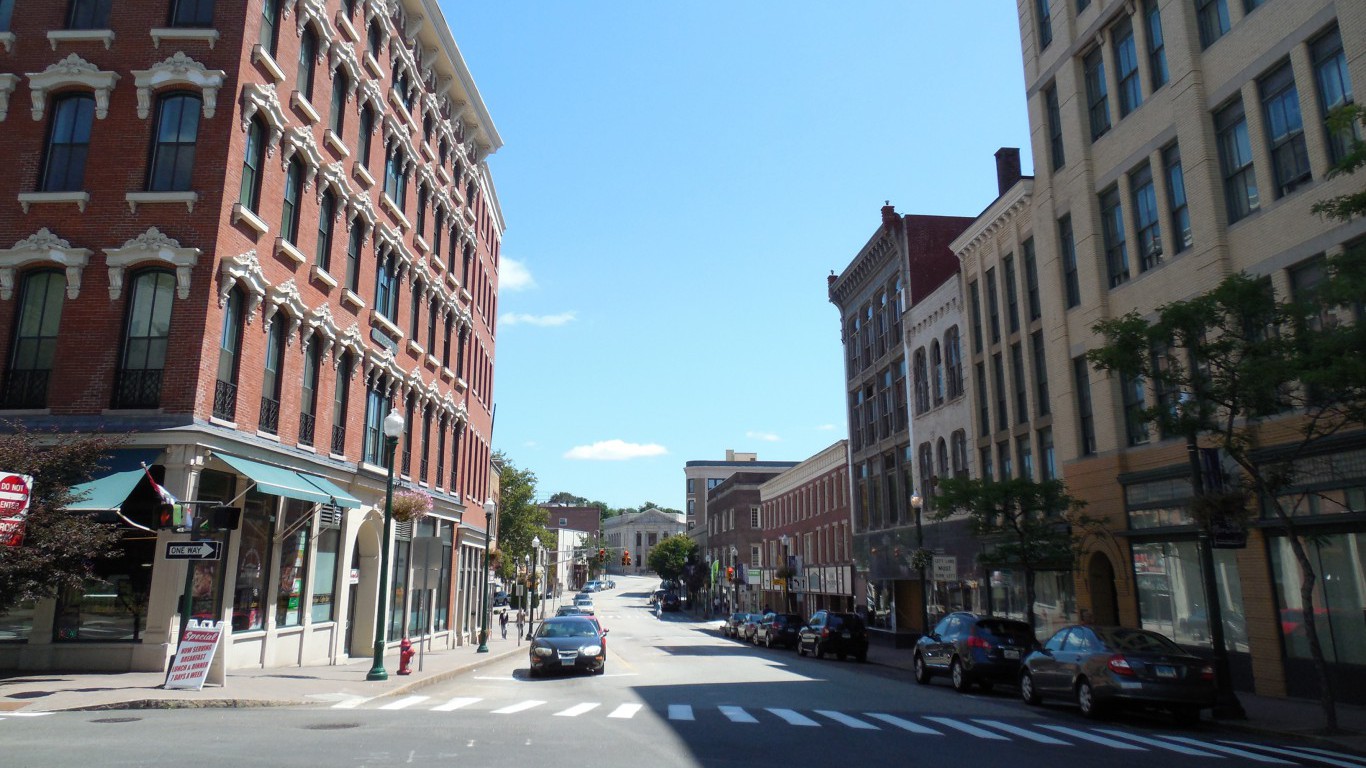
13. Norwich-New London, CT
> 5-yr. change in number of families: +1.3%
> Violent crimes per 100,000 people: 323.7
> Share of 3-4 yr. olds in preschool: 61.0%
> Graduation rate: 89.5%
Of the four major metropolitan areas in Connecticut, three rank among the best cities for families. Advantages in the Norwich-New London metro area include access to both medical care and preschool programs. Child health care coverage is nearly universal in Norwich-New London as only 1.1% of area children are uninsured. Additionally, the metro area is one of only three nationwide with a lower than average violent crime rate and a preschool enrollment among 3 and 4-year olds over 60%.

12. Sheboygan, WI
> 5-yr. change in number of families: +4.7%
> Violent crimes per 100,000 people: 174.5
> Share of 3-4 yr. olds in preschool: 41.1%
> Graduation rate: 93.9%
Children who grow up in the Sheboygan metro area are far more likely to finish high school than most. About 94% of students in the area graduate from high school, the third highest graduation rate among U.S. metro areas. A favorable job market also helps area parents. The unemployment rate among working parents in Sheboygan is only 1.9%, half the comparable U.S. rate.
[in-text-ad-2]

11. Portland-South Portland, ME
> 5-yr. change in number of families: +1.5%
> Violent crimes per 100,000 people: 134.6
> Share of 3-4 yr. olds in preschool: 46.1%
> Graduation rate: 89.0%
The Portland-South Portland metro area boasts 58 recreation centers and 2.2 public parks for every 100,000 families, a larger share than most other U.S. metro areas and far more than across the U.S. as a whole.
Additionally, incomes tend be relatively high in the area as the typical family earns $77,500 a year, nearly $10,000 more than the typical American family.

10. Fond du Lac, WI
> 5-yr. change in number of families: -2.9%
> Violent crimes per 100,000 people: 214.3
> Share of 3-4 yr. olds in preschool: 41.4%
> Graduation rate: 90.4%
The Fond du Lac metro area has a number of advantages for families, especially the area’s affordability. The typical area home is only worth about double the median family income. Nationwide, home values are typically nearly three times the median family income. The metro area is also one of a minority nationwide where more than 9 in every 10 students graduate from high school.
[in-text-ad]
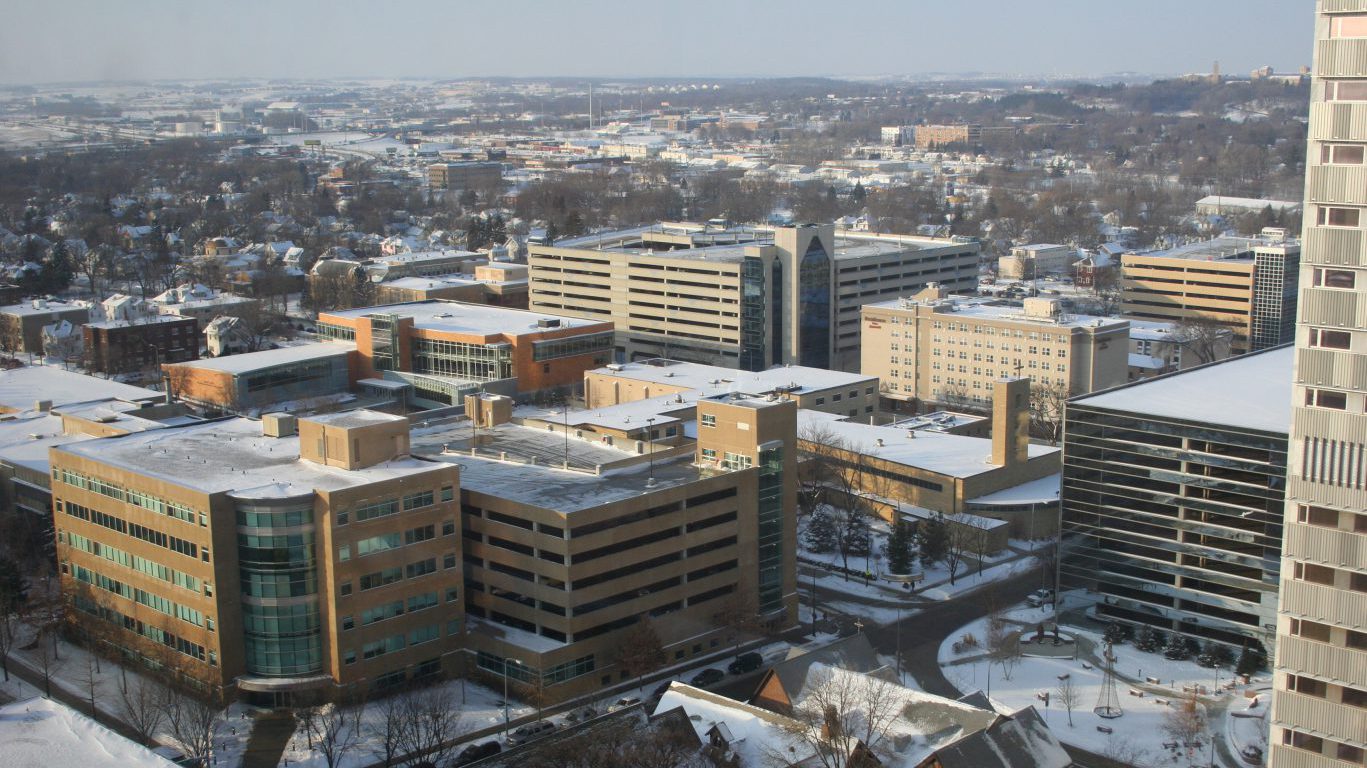
9. Rochester, MN
> 5-yr. change in number of families: +13.6%
> Violent crimes per 100,000 people: 127.6
> Share of 3-4 yr. olds in preschool: 43.8%
> Graduation rate: 85.0%
The number of families living in the Rochester, Minnesota metro area shot up by 13.6% over the last five years, one of the larger increases among U.S. metro areas. New area families join the ranks of those already benefitting from the area’s positive socioeconomic conditions. Both the area’s violent crime rate and share of families with children living below the poverty line are less than half the comparable national rates.
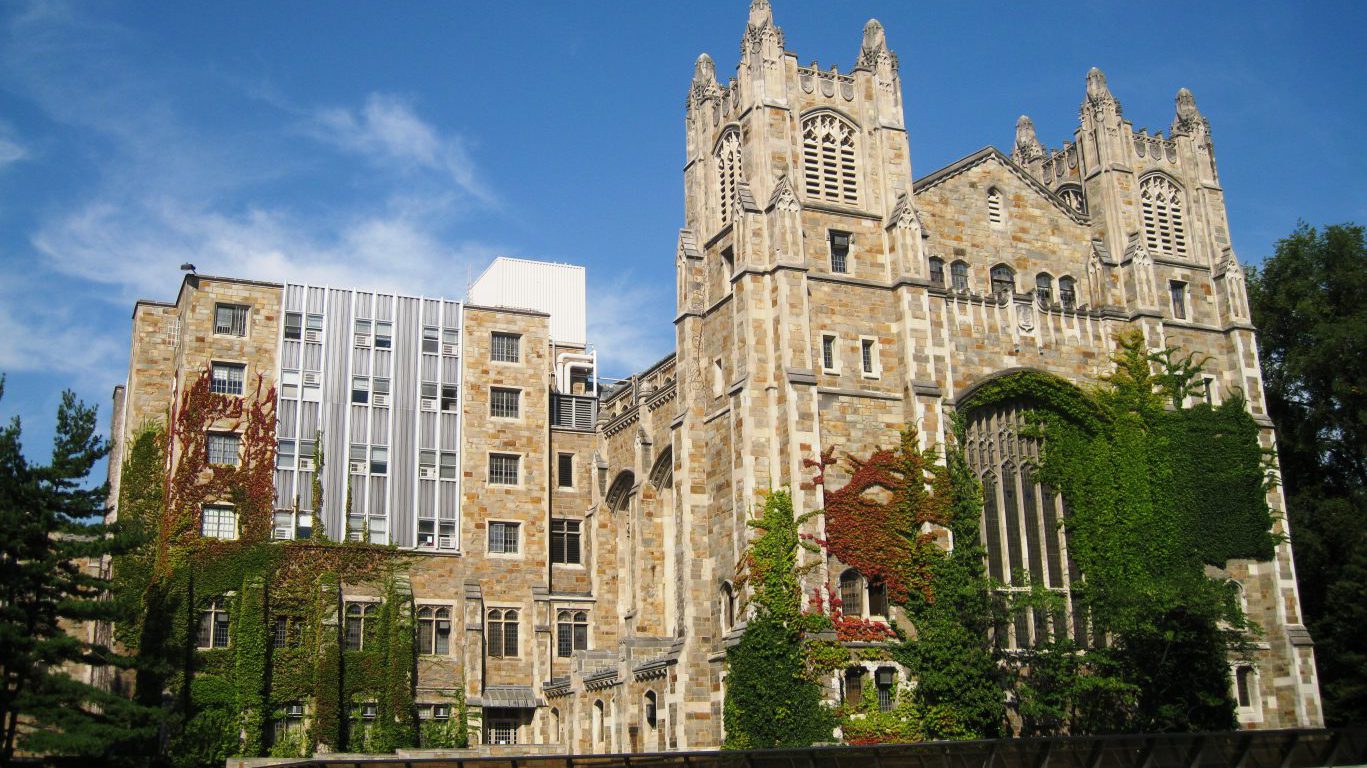
8. Ann Arbor, MI
> 5-yr. change in number of families: +5.1%
> Violent crimes per 100,000 people: 319.5
> Share of 3-4 yr. olds in preschool: 56.0%
> Graduation rate: 86.6%
Children in the Ann Arbor metro area are more likely than most to receive medical care when they need it. While around 95% of children are insured nationwide, 98% of children in Ann Arbor are covered. Children in the area are also far more likely than most to be in a preschool program as some 56% of 3 and 4-year olds in the area are enrolled, about nine percentage points higher than the comparable U.S. enrollment rate.

7. Hartford-West Hartford-East Hartford, CT
> 5-yr. change in number of families: -1.2%
> Violent crimes per 100,000 people: 252.8
> Share of 3-4 yr. olds in preschool: 64.8%
> Graduation rate: 87.1%
The Hartford metro area is one of the best metro areas in the United States for families and the second best in Connecticut. As is the case in the other two metro areas considered in the state, more than 60% of 3 and 4-year olds in the broader Hartford metro area are enrolled in a preschool program.
Jobs in the metro area also tend to be high paying. The typical family earns nearly $92,000 a year, well above the $68,260 median family income nationwide.
[in-text-ad-2]

6. Charlottesville, VA
> 5-yr. change in number of families: +17.4%
> Violent crimes per 100,000 people: 164.6
> Share of 3-4 yr. olds in preschool: 58.5%
> Graduation rate: 87.3%
Teen births are not especially common in Charlottesville. Across the metro area, there are only about 15.5 births per 1,000 women between the ages 15 and 19, one of the lowest teen birth rates among metro areas and less than half the comparable U.S. rate. Also, 10.8% of children in the Charlottesville metro live are in poverty, one of the lowest child poverty rates in the country.

5. Manchester-Nashua, NH
> 5-yr. change in number of families: -3.1%
> Violent crimes per 100,000 people: 281.4
> Share of 3-4 yr. olds in preschool: 52.1%
> Graduation rate: 87.0%
Despite reporting a 3.1% decline in the total number of families in the last five years, the Manchester metro area is one of the best places in the country for families. Both the area’s 8.8% child poverty rate and 2.1% child uninsured rates are less than half the corresponding national figures. Families also have relatively easy access to areas for sports and physical activity. There are 65 recreation centers, including swimming pools and tennis courts, for every 100,000 area families, a larger share than in all but 14 other U.S. metro areas.
[in-text-ad]

4. Appleton, WI
> 5-yr. change in number of families: +4.9%
> Violent crimes per 100,000 people: 138.8
> Share of 3-4 yr. olds in preschool: 42.9%
> Graduation rate: 91.9%
If you like playdates in the park, consider moving to Appleton, Wisconsin. The metro area ranks among the top 10 nationwide for its concentration of public parks. The students of Appleton are no slouches either, boasting a 92% graduation rate, putting them in the top 15 nationwide.
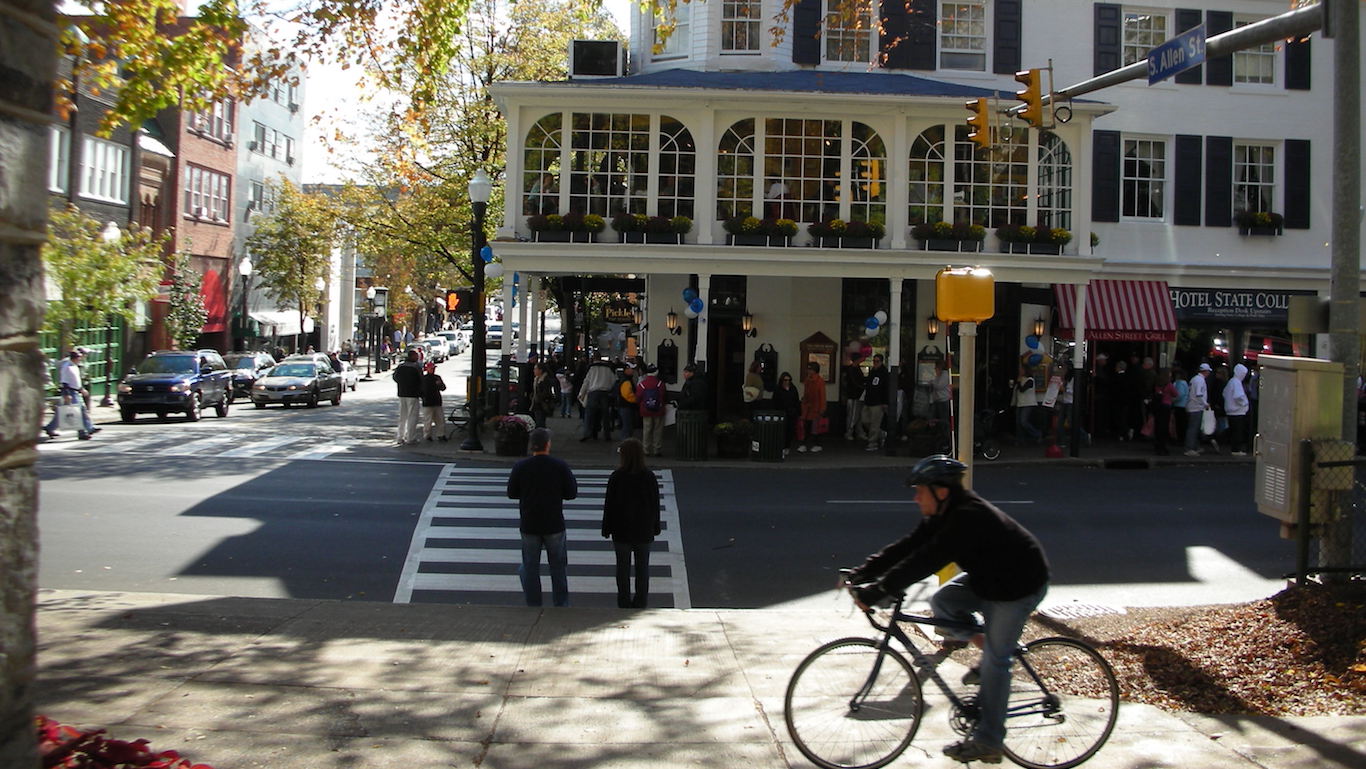
3. State College, PA
> 5-yr. change in number of families: +0.8%
> Violent crimes per 100,000 people: 102.6
> Share of 3-4 yr. olds in preschool: 49.0%
> Graduation rate: 91.6%
Students in State College, Pennsylvania are more likely to graduate from high school than those in the vast majority of U.S. metro areas. The State College metro area’s 91.6% graduation rate is well above the comparable 83.0% U.S. figure. Metro area parents are also far more likely to have a steady income, as only 1.6% of adults in the workforce with children are without a job, less than half the U.S. unemployment rate among parents.
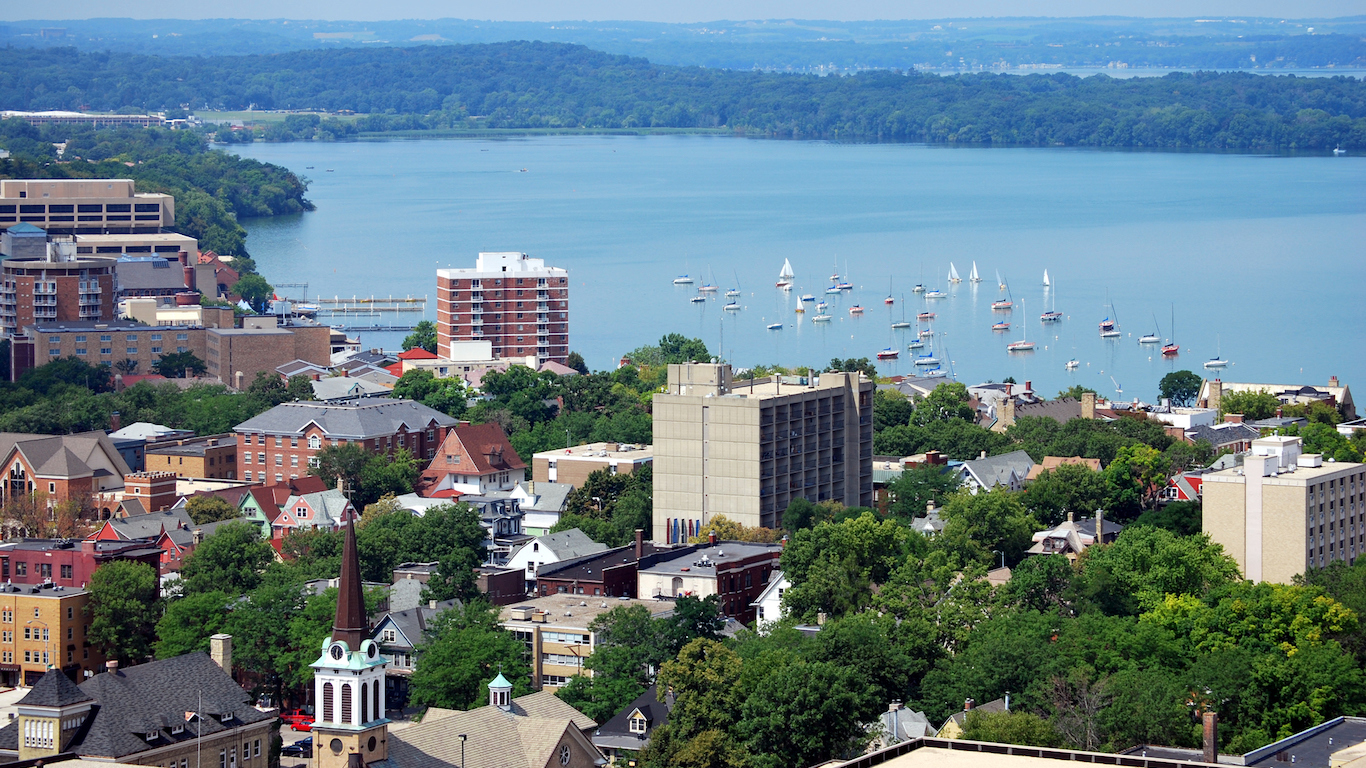
2. Madison, WI
> 5-yr. change in number of families: +11.1%
> Violent crimes per 100,000 people: 211.9
> Share of 3-4 yr. olds in preschool: 47.9%
> Graduation rate: 88.3%
Madison, Wisconsin ranks well compared to other metro areas in measures of both education and recreation. Children in the metro area are more likely to be enrolled in preschool and graduate from high school than those in most other metro areas. Additionally, families in Madison have better access to recreation centers and sports facilities than is typical in most cities. The number of families in the metro area has spiked by 11.1% in the last five years, nearly six times the growth rate nationwide.
[in-text-ad-2]

1. Bridgeport-Stamford-Norwalk, CT
> 5-yr. change in number of families: +3.5%
> Violent crimes per 100,000 people: 201.5
> Share of 3-4 yr. olds in preschool: 69.5%
> Graduation rate: 89.3%
While the city of Bridgeport struggles with a number of socioeconomic problems, including a 20.6% poverty rate, the broader metro area is the best place to raise a family in the United States. The Bridgeport-Stamford-Norwalk metro area boasts the nation’s highest preschool enrollment rate, the best access to sports and recreation facilities, and the third highest median income among families.
Methodology:
To identify the 30 best cities for families, 24/7 Wall St. created an index accounting for a range of social, educational, and economic measures, as well as measures of health. Metro areas with a violent crime rate, or property crime rate, that exceeded the corresponding national rates were excluded.
The social components of the index were the five year change in the number of families, share of families with children, recreation centers and public parks for every every 100,000 families. The education component was comprised of the high school graduation rate, preschool enrollment, and the relative share of workers employed in child day care services. The economic measures included were the 2015 unemployment rate among parents, the child poverty rate, average commute time, and the ratio of median family incomes to home values. The measures of health included in the index were the child uninsured rate, teen birth rate, and share of the population with limited access to healthy food.
Graduation rates and teen birth rates are from 2017 County Health Rankings & Roadmaps, a Robert Wood Johnson Foundation and University of Wisconsin Population Health Institute joint program. The share of the population with limited access to health food is from the U.S. Department of Agriculture’s Economic Research Service. Employment in child day care centers is from the Bureau of Labor Statistics’ Quarterly Census of Employment and Wages. The number of parks and recreation centers come from County Business Patterns, a division of the U.S. Census Bureau. All other data came from the Census’ 2015 American Community Survey.
Credit Card Companies Are Doing Something Nuts
Credit card companies are at war. The biggest issuers are handing out free rewards and benefits to win the best customers.
It’s possible to find cards paying unlimited 1.5%, 2%, and even more today. That’s free money for qualified borrowers, and the type of thing that would be crazy to pass up. Those rewards can add up to thousands of dollars every year in free money, and include other benefits as well.
We’ve assembled some of the best credit cards for users today. Don’t miss these offers because they won’t be this good forever.
Flywheel Publishing has partnered with CardRatings for our coverage of credit card products. Flywheel Publishing and CardRatings may receive a commission from card issuers.
Thank you for reading! Have some feedback for us?
Contact the 24/7 Wall St. editorial team.
 24/7 Wall St.
24/7 Wall St. 24/7 Wall St.
24/7 Wall St. 24/7 Wall St.
24/7 Wall St. 24/7 Wall St.
24/7 Wall St.


